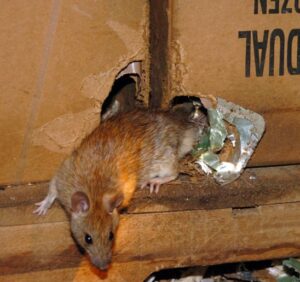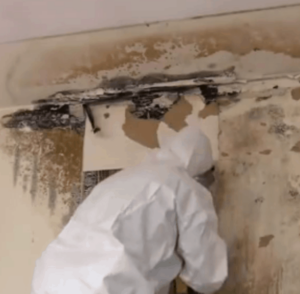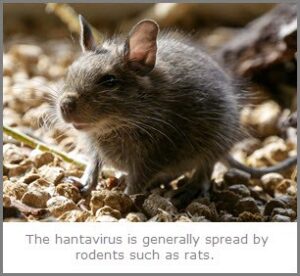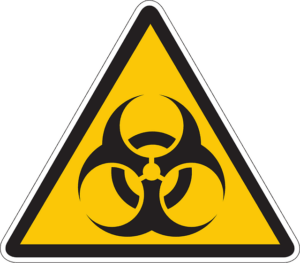You might wonder with all the focus on food safety and recalls of contaminated foods as well as modern tools to control infection that at times there is an outbreak of a contagious disease. There are a number of reasons for this, but often it’s because the organism itself has become resistant to disinfectants. (Other times it’s because of a bacteria that has become antibiotic resistant, but that’s another topic.) This is something of great concern for our biohazard cleanup crews, because we endeavor to follow best practices to decontaminate places where the existence of a contagious organism might be present. Disinfectants commonly used successfully against many viruses and bacteria sometimes will not be enough against particular organism.
Plain and simple, sometimes clean is not clean. Despite best efforts, certain bacteria and other infectious organisms can still survive and thrive to infect. A good example of this is the norovirus. And what makes this a major issue is that this virus is the most common cause of stomach distress such as vomiting and diarrhea. Something (or someone) becomes infected with the norovirus because of contact with a substance that has been contaminated with fecal matter where the virus is present. It can also come from direct contact with an infected individual, but more often than not it’s due to either ingesting food or water where the virus is present, or by touching a surface where it is present and then touching one’s mouth without washing the hands.
And believe it or not, many infection control experts believe that part of the cause of this is the overuse of disinfectants. Many people are aware of the rise of what’s referred to as ‘superbugs’ that are resistant to treatment by antibiotics, but there are also organisms such as viruses that can’t be successfully controlled by disinfectants that work well against most others. And even more problematic is that at times the transmission of an organism is due to contamination of the disinfectant itself.
Alcohols are used as common spot disinfectants, especially for surfaces. Alcohol solutions are also commonly used to store medical equipment following sterilization. But alcohols have been found to be ineffective against certain viruses, including the adenovirus (a common but unwelcome visitor to mucous membranes, airways, and more, including ‘pink eye’ or conjunctivitis). The tips of instruments called tonometers, used to test the pressure in the eyeball, are often cleaned ineffectively with alcohol, and this practice can in fact cause the spread of an infection called keratoconjunctivitis.
There is also speculation that the over-use of hand sanitizers may be contributing to the rise of disinfectant-resistant microbes. Many individual use this alcohol-based preparations in place of the recommended soap-and-water hand washing regimen, believing it to be safer. But in fact the CDC recommends washing your hands with soap and water whenever possible, and using a hand sanitizer only when that is not available.
Formaldehyde solutions are often used in medical settings and usually are effective against bacteria, fungi, spore-type organisms such as mold, and tuberculoids. However, there have been reports of outbreaks of infection due to klebsiella oxytoca. Normally a healthy gut bacteria, it can cause infections in the body when it is present outside the intestinal area. This bacteria is responsible for most infections acquired by hospitalized adults. Due to its resistance to most of the commonly-prescribed antibiotics, this bacteria may be pathogen whose threat has been underestimated.
Are these organisms mutating to resist disinfectants? At present the question is up for debate. Some believe that user error is at the root of the problem, with the culprits being excessive dilution or storing improperly-cleaned materials in a disinfectant, which then contaminates it. One thing is extremely important in using disinfectants: cleaning prior to their use. Removal of proteins and biofilms on a surface must occur first.
As a company specializing in cleanup of infectious agents here in the Pacific Northwest, we endeavor to stay current on industry information such as this so that our biohazard cleanup and remediation technicians are using the best practices possible to reduce the spread of infection in areas we are responsible to clean.

 People are wise to be considered about the dangers posed by rodent infestation. In cold weather it’s especially important to be aware of the threats, because as the temps drop, these critters look for a warm and dry place, and they are notorious for being able to squeeze into very small areas. A crack in a siding or a small pipe might be all they need to gain entrance to your home or office building. The stereotypical ‘squirrels in the attic’ is so well known because it happens often.
People are wise to be considered about the dangers posed by rodent infestation. In cold weather it’s especially important to be aware of the threats, because as the temps drop, these critters look for a warm and dry place, and they are notorious for being able to squeeze into very small areas. A crack in a siding or a small pipe might be all they need to gain entrance to your home or office building. The stereotypical ‘squirrels in the attic’ is so well known because it happens often. As much of the Pacific Northwest is being hit with ice, snow, and temps down into the teens in many areas, many people wonder if biohazards like bacteria and germs are still a threat. After all, doesn’t the below-freezing temperature kill those germs?
As much of the Pacific Northwest is being hit with ice, snow, and temps down into the teens in many areas, many people wonder if biohazards like bacteria and germs are still a threat. After all, doesn’t the below-freezing temperature kill those germs? Mold is something we encounter often when
Mold is something we encounter often when  Homeless encampments are a major problem here in this part of the Pacific Northwest, and as the temperatures drop, communities are closing down outdoor homeless dwellings in an attempt to move these people into warm shelters. Once the residents have been removed (sadly, it is often forcibly), those
Homeless encampments are a major problem here in this part of the Pacific Northwest, and as the temperatures drop, communities are closing down outdoor homeless dwellings in an attempt to move these people into warm shelters. Once the residents have been removed (sadly, it is often forcibly), those  Generally the virus is carried by an otherwise healthy rodent such as a rat. The virus can be transmitted by contact with bodily fluids from rodents (feces, urine, or saliva). What is especially concerning is that the virus can become airborne when these fluids are disturbed by cleanup actions like vacuuming or sweeping. Simply inhaling dust could lead to a severe respiratory infection called Pulmonary Hantavirus Syndrome. This afflicts anyone – even otherwise healthy individuals.
Generally the virus is carried by an otherwise healthy rodent such as a rat. The virus can be transmitted by contact with bodily fluids from rodents (feces, urine, or saliva). What is especially concerning is that the virus can become airborne when these fluids are disturbed by cleanup actions like vacuuming or sweeping. Simply inhaling dust could lead to a severe respiratory infection called Pulmonary Hantavirus Syndrome. This afflicts anyone – even otherwise healthy individuals.


